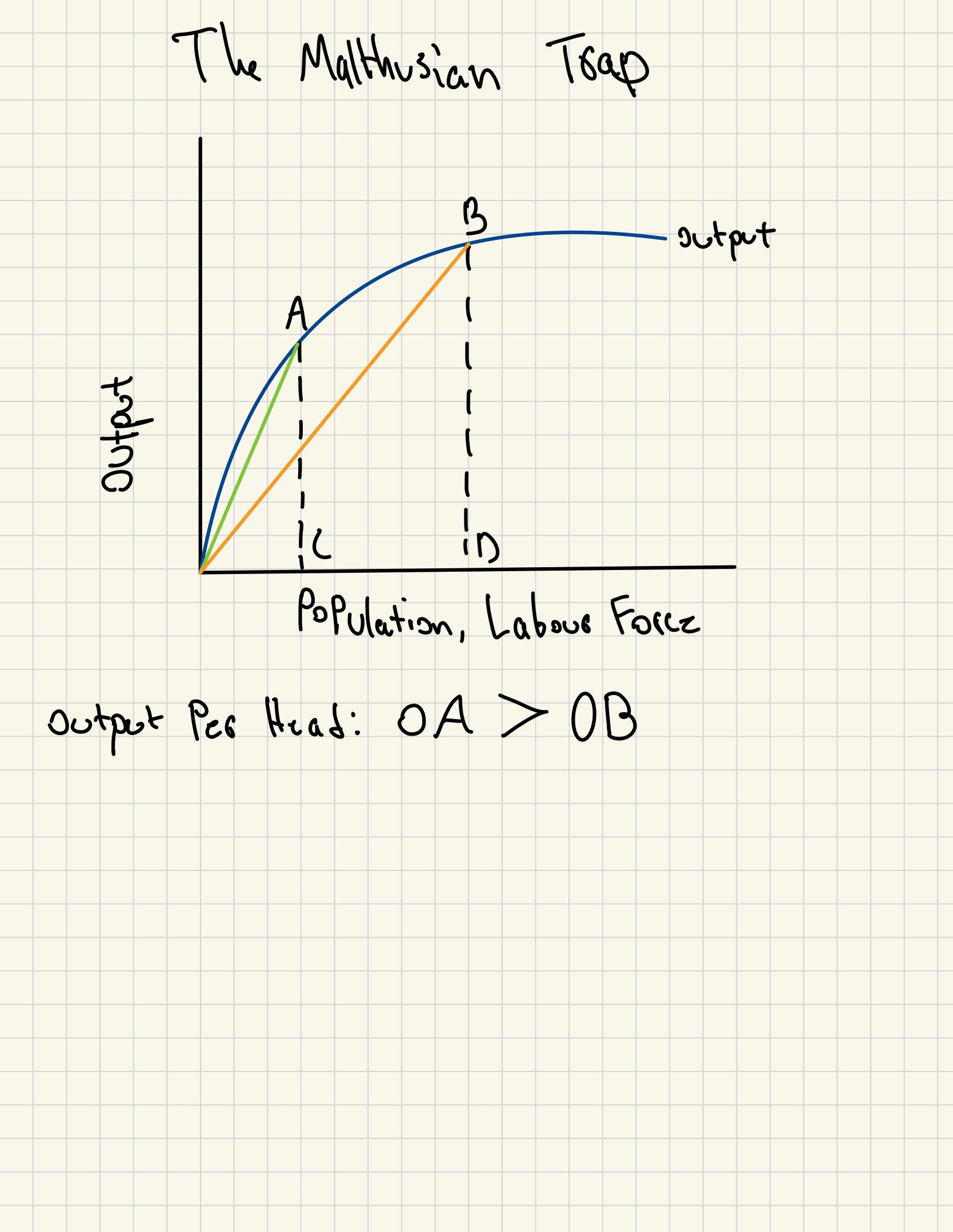Supply-Side Economics and Economic Growth 8
1/16
There's no tags or description
Looks like no tags are added yet.
Name | Mastery | Learn | Test | Matching | Spaced |
|---|
No study sessions yet.
17 Terms
Supply Side Economics
Theory focused on boosting output by improving incentives to work, save, and invest to thus increase input.
Long-Run Aggregate Supply (LRAS): Definition and Features
Definition: Total quantity/supply of goods and services that an economy can produce at full employment and optimal use of resources, reflecting the economy's potential output.
Features
Vertical Shape: Indicating that economy’s output is not influenced by price change in the long run
An increase in tech would shift the curve right, due to increased efficiency
A decrease in labour would shift the curve left due to decreased inputs decreasing supply.
Short-Run Aggregate Supply (SRAS): Definition and Features
Definition: Total supply of goods and services that firms in an economy are willing to produce at different price levels in the short-term, while some factors (e.g. wages, resource prices) are fixed or slow to adjust.
Features:
Upward Sloping as price affects supply
Sticky Prices and Wages (Do not adjust immediately) due to…
Contracts
Costs of changing prices
Behavioural Factors (Resistance to wage cuts)
Shifts
Right Shift (Increase in SRAS)
Decrease in input costs (cost of production/resources)
Positive supply shocks (e.g. improved productivity)
Left Shift (Decrease in SRAS)
Increase in input costs
Negative supply shocks (e.g. natural disasters, Politics)
Supply-Side Policies
Government policies aimed to increase output by improving incentives to production (supply and labour cpaital ) e.g. training, education programs, subsidies, or tax incentives.
5 Factors of Production
Land
More land in e.g. Agriculture = more output
Labour
Sustained Population growth causes increased labour force
Capital
Human Capital/Innovation(Skill and Knowledge)
More Education/Experience = More Productivity
Raw Materials
More materials = more output
Production Function Y = A * f(K,L)
Model showing the max obtainable output from specified quantities of inputs, given the existing technilogical knowledge.
Shows higher potential output is due to more inputs or technological advances that increase productivity.
Y = Output
K = Capital
L = Labour
F = Constant function that determines the value of K and L
A = Technological progress
Land is assumed to be fixed
Malthus’s Theory and Checks
Suggest population growth grows exponentially while food supply only grows linearly.
Since food supply cannot keep up with population growth it becomes insufficient to supply a growing population and he suggested that Checks occur to control population growth
Checks
Preventive Checks
Voluntary actions which suppress population growth e.g. Delayed Marriage, Reduced Birth rate.
Positive Checks
Involuntary e.g. Famine, war, disease
Cycle of Misery Malthus
Malthus’s belief that population growth will exceed food supply, causing checks to occur which will bring the population back down.
Flaw of the Malthusian Theory
Technological advances that increase food supply
Demographic Transition: As developed economies tend to experience a slowdown in population growth
Global Trade which allow for increased supply
The Malthusian Trap
The idea that as a population and labour force grow the land and resource supply does not grow fast enough, causing diminishing returns making the marginal product of labour/productivity fall.
This was correct for poor countries but rich countries were able to break out of this raising productivity and switching to industrial production.

Neoclassical Growth Theory
Explains how the economy grows over time by focusing on 3 things
Capital
Labor
Technology: In long run only improvements in technology can grow the economy sustainably.
Key Ideas
Poor countries usually grow faster by rich ones by increasing their capital and labor, and once the country reach a “Steady State” (sustainable level of capital, labour and growth), further growth only depends on technological progress.
Steady State Path
Were output, capital and labour grow at the same rate, so output and capital per worker is constant, and increased output and capital per person depends on technology to increase productivity.
Labour Augmenting Technical Progress
Refers to advancements in technology that make workers more productive, as it enables them to produce more output in the same amount of time.
Convergence Hypothesis
Idea that poorer countries will grow faster than rich countries
This is because as they are equipped with less capital, additional investment with create greater returns
WHile richer countries with already high levels of capital will experience a slower increase of growth with more investment.
Capital Widening vs Capital Deepening
Widening: Increasing the total amount up capital to keep up with the growing size of the labour force, so the capital to labour force ratio stays the same, thus sustaining growth.
Deepening: Increasing the amount of capital per worker, enhancing productivity and output per individual worker.
Downsides of a Growing Economy
Pollution, Climate Change, and Hectic Lifestyle